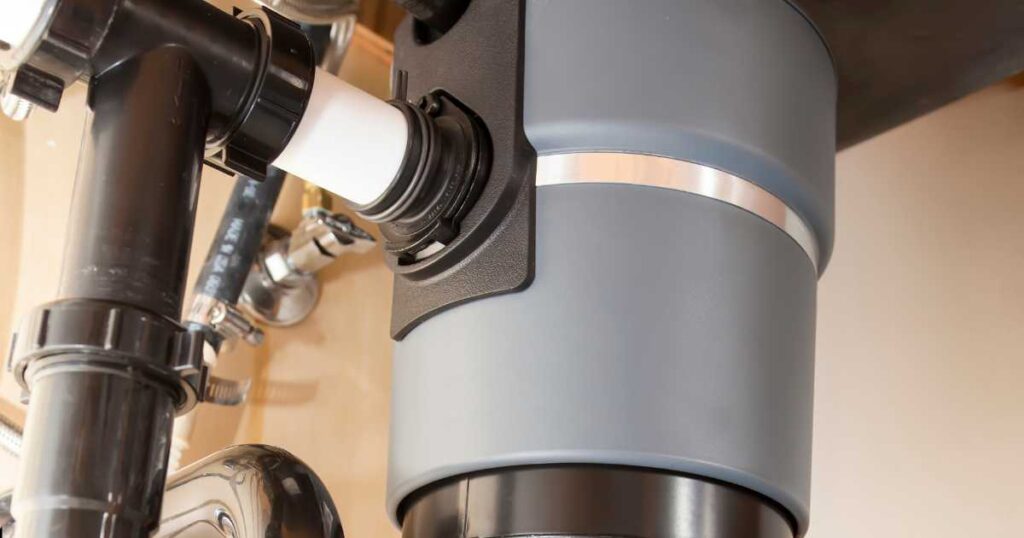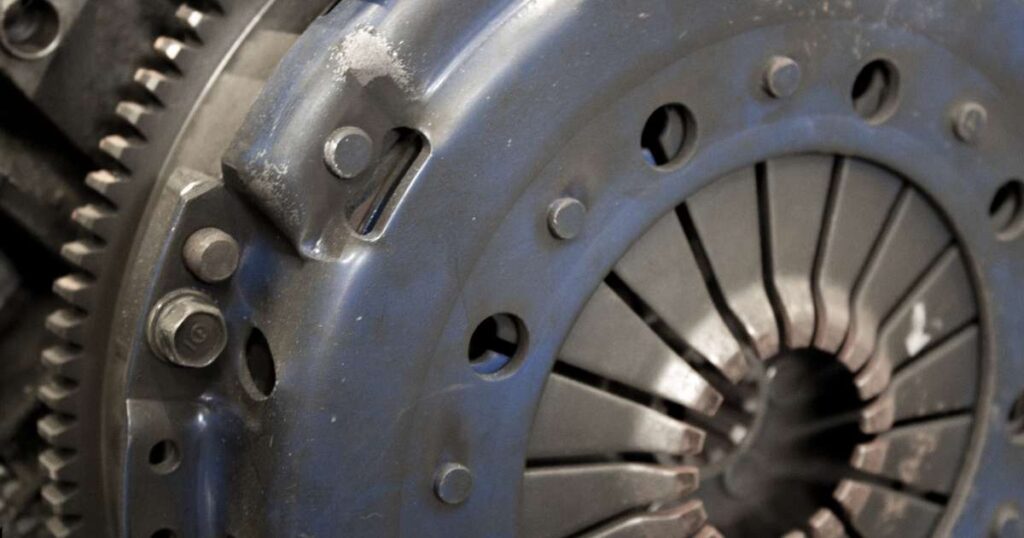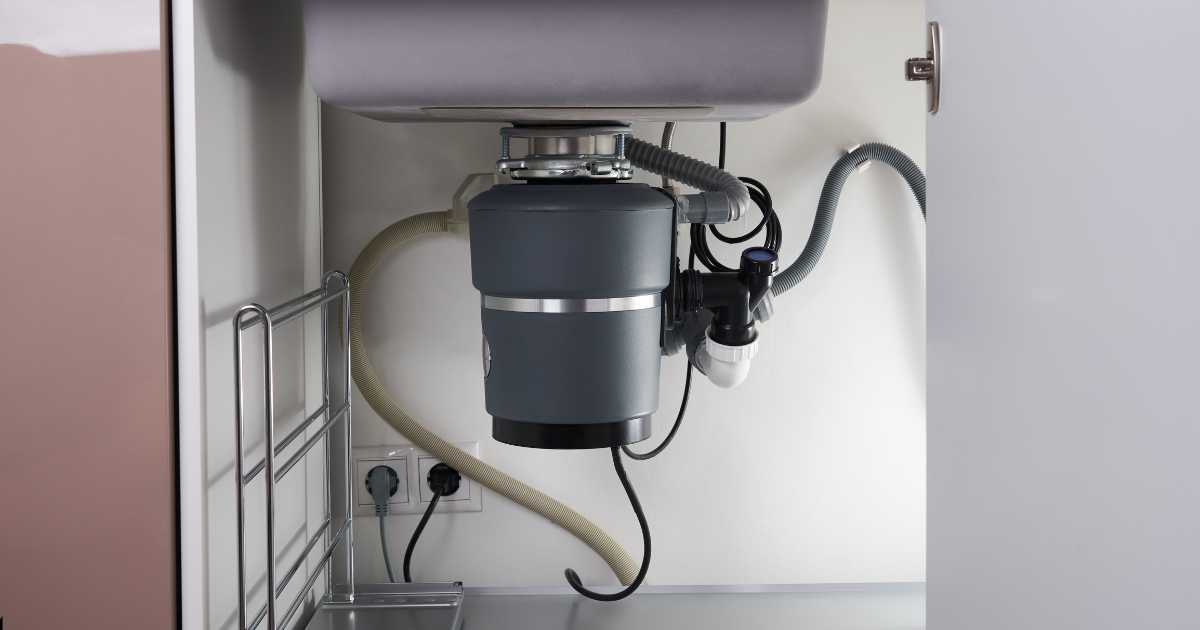Garbage disposals are a convenient addition to any kitchen, making it easy to dispose of food waste without clogging your plumbing. However, when a garbage disposal suddenly stops working, it can disrupt daily kitchen activities and create an unpleasant situation.
Understanding the reasons why a disposal might stop working can help homeowners troubleshoot and potentially fix the issue without needing immediate professional assistance. Common problems include power issues, motor burnout, clogs, jams, and component wear and tear.
In this guide, we’ll take a closer look at the common reasons your garbage disposal might stop working. We’ll walk you through how to spot the problem and share practical solutions to get it working again. With just a bit of know-how, you can often fix small issues yourself, saving you both time and money.
Power Issues:
When a garbage disposal stops working entirely, one of the first things to check is whether it’s receiving power. Often, if you flip the switch and nothing happens—no hum or noise at all—it could be an electrical issue. Start by ensuring the disposal is properly plugged in and that the outlet is functional. Test the outlet by plugging in a different appliance if needed.
If the outlet works but the disposal doesn’t, check the circuit breaker panel to see if the breaker has tripped. Circuit breakers can trip if the disposal overheats or overloads. Simply resetting the breaker may restore power. Many disposals also have a reset button located on the bottom or side; press this button if it’s popped out to reset the unit.
Electrical issues are common and often straightforward to address, so starting here can save time and effort.
Motor Burnout:
Garbage disposals are meant to be used often, but over time, their motors can give out—especially if they’re overloaded or get jammed too frequently. When the motor stops working, your disposal won’t turn on, and you might not hear anything at all. Sometimes, you could even notice a burning smell or see smoke if the motor fails.
Unfortunately, a burned-out motor usually requires replacement of the entire disposal unit, as motor repair can be impractical and costly. If your disposal is old, this might be an indication that it’s time to upgrade to a new, more powerful model. Investing in a disposal with a stronger motor can also prevent future burnout.

Clogs and Jams:
A common reason for disposal stoppages is clogs or jams caused by foreign objects or excess food waste. When hard or non-food items (such as bones, silverware, or plastics) fall into the disposal, they can jam the blades, preventing movement.
Overloading the disposal with too much food waste can also cause problems. Placing fibrous items like celery, corn husks, or banana peels in at once can wrap around the blades, blocking the mechanism. If this happens, you may hear a loud hum as the motor struggles to turn the blades but can’t due to the jam
To resolve this, turn off the disposal, unplug it, and use tongs or pliers to carefully remove any visible obstructions. Breaking down large scraps into smaller pieces before disposal can also prevent jams in the future.
For larger waste items, a construction dumpster rental could be a practical solution.
Blades and Impeller Issues:
Over time, the blades in a garbage disposal may become dull, reducing the unit’s ability to process food waste efficiently. Although this doesn’t usually stop the disposal from running, it can lead to frequent clogging or incomplete grinding.
The impellers, which push food toward the shredder ring, can also loosen or become damaged with heavy use. Loose or broken impellers will reduce grinding efficiency, as the waste won’t be effectively directed to the blades.
If the disposal isn’t grinding food as it used to, you may need to inspect the impellers or blades. Professional maintenance can sometimes replace or re-tighten these parts, but in many cases, it’s easier to replace an old disposal with a newer, more efficient model.
Jammed Flywheel:
The flywheel, the central spinning part that drives the grinding blades, can become jammed by foreign objects or tough scraps. If you hear a hum but no grinding, the flywheel may be the culprit. To free it, first ensure the disposal is unplugged or turned off at the circuit breaker.
Many disposals come with a hex wrench for this purpose, which can be inserted into a hole at the bottom of the unit. By turning the wrench, you can manually rotate the flywheel, which may help dislodge whatever is causing the jam.
After clearing the jam, plug the disposal back in and test it. This simple procedure can often restore functionality without needing professional help.

Drain Line Clogs:
A clogged drain line is a frequent cause of disposal backups. If food particles aren’t being ground down properly, they can clog the drain, causing water to back up into the sink. This can make it seem like the disposal isn’t working, as waste won’t drain. To clear a drain line clog, disconnect the disposal from power and detach the drainpipe.
Using a plunger or plumber’s snake, remove any debris in the line. For persistent clogs, you may need to disassemble the pipe further or consult a professional. Avoiding pouring grease down the disposal and running water for 10–15 seconds after each use can prevent clogs from forming. For persistent clogs or larger-scale kitchen cleanouts, check out post-construction cleaning services that include dumpster rentals.
Leaking Disposal:
Leaks can arise when the seals or connections in a disposal loosen or wear down over time. A leaking disposal can lead to electrical issues if water reaches the motor, and it can cause damage to cabinets or floors. Common leak points include the flange where the disposal connects to the sink, the drain pipe, and the connection to the dishwasher if it’s attached.
Tightening loose screws or replacing worn seals can usually fix leaks. Regularly inspect your disposal and surrounding plumbing for any signs of water or moisture, as catching leaks early can save time and expense.
If water damage or excessive waste results, you might want to explore waste management tips for better disposal practices.
Switch Malfunction:
The wall switch or button that powers the disposal may also malfunction. If the switch has worn out or there’s a loose wire, the disposal might fail to start. Replacing the switch is typically a quick fix if you have some basic electrical knowledge. Turn off the power at the breaker, remove the old switch, and install a new one.
If you’re not comfortable with electrical work, it may be wise to hire a professional electrician. Replacing a faulty switch is much cheaper than replacing the disposal itself, so this is worth checking before moving on to other potential causes.
Preventative Tips to Extend the Life of Your Garbage Disposal
To keep your garbage disposal running smoothly, there are a few easy habits to follow. Don’t overload it with too much waste at once; instead, feed it small amounts, especially when dealing with tougher scraps. And always run cold water while it’s on—it helps solidify fats and oils, making them easier to grind up.
Finally, regular cleaning can prevent buildup. Ice cubes help remove stuck particles, and a mixture of baking soda and vinegar can help deodorize and dissolve any accumulated grime. These small maintenance habits can extend the life of your disposal and reduce the chances of unexpected issues.
By troubleshooting these issues and performing routine maintenance, you can often keep your garbage disposal running smoothly for years.
Frequently Asked Question
Why is my garbage disposal making a humming sound but not grinding?
A humming sound usually indicates that the disposal’s motor is running, but the blades or flywheel are jammed. This could be due to an obstruction, such as a foreign object or a hard piece of food. Try turning off the disposal, unplugging it, and using a hex wrench in the bottom hole to manually rotate the flywheel. This often helps dislodge whatever is causing the jam.
How do I reset my garbage disposal?
Most garbage disposals have a reset button, usually located on the bottom of the unit. If the disposal overheats or experiences a jam, this button will pop out. Simply press it back in to reset the unit. If the button continues to pop out, there may be a larger issue, such as a motor failure, that needs to be addressed.
Is it okay to use hot water in my garbage disposal?
While running the disposal, it’s best to use cold water. Cold water helps to solidify fats and oils, making them easier to grind and reducing the chance of a clog. You can use hot water to clean the disposal afterward, but avoid using it during operation.
What items are safe to put down my garbage disposal?
Garbage disposals are designed to handle soft food scraps. Small amounts of vegetable peels, fruit scraps, and other non-fibrous foods are generally safe. Avoid putting bones, coffee grounds, eggshells, grease, fibrous vegetables (like celery), and non-food items down the disposal, as these can cause jams and damage.
How can I prevent bad odors in my garbage disposal?
To keep odors at bay, regularly clean your disposal. You can grind ice cubes to help remove stuck-on food particles, and a mixture of baking soda and vinegar can help deodorize it. Lemon or orange peels can also freshen up the disposal, leaving a pleasant scent.
When should I replace my garbage disposal?
Most garbage disposals last around 8-15 years, depending on usage and maintenance. If the disposal frequently jams, has motor issues, or doesn’t grind food effectively, it may be time to consider a replacement. Newer models are often more efficient and may have improved features to handle food waste better.
Conclusion
A garbage disposal is a valuable tool in the kitchen, but like any appliance, it requires care and occasional troubleshooting. By understanding the common reasons why a garbage disposal might stop working—such as power issues, motor burnout, or clogs—homeowners can often resolve issues independently.
By following a few simple steps such as pressing the reset button, clearing blockages, and performing basic maintenance you can extend the life of your garbage disposal and avoid unexpected problems. With some routine care, it will keep making kitchen cleanup quick and easy for years to come.
